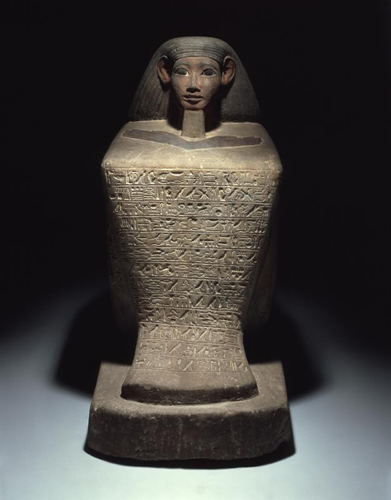While this sandstone statue of Sitepihu dates to the Eighteenth Dynasty (around 1470 BCE), the block figure itself was a type that was introduced at the beginning of the Twelfth Dynasty (around 1900 BCE), several hundred years earlier. It represents a squatting male figure with a long cloak enveloping his entire body. His arms are folded over his knees, which he has drawn up to his chest. Sculptors may have used as a model the images of tomb owners seated in a sedan chair. Such scenes were carved on the walls of tomb chapels of even earlier periods in the northern area of Saqqara, and would they have been accessible to the artists. The new form provided an added benefit: increased space for inscriptions. Here the text concentrates on prayers for offerings that the deceased required for the afterlife.
It also includes his titles, such as Overseer of the Priests in the southern area of Abydos, the site where archaeologists discovered this figure near his plundered tomb. The duties of his office would have included supervising other priests and maintaining the temple estate, and overseeing temple rituals. Sitepihu lived during the reign of Queen Hathsepsut and was involved in setting up one of her obelisks. Original paint is still preserved in the upper area of the figure. Interestingly, the inscription does not continue around the entire figure.
Penn Museum Object #E9217
See this and other objects like it on Penn Museum’s Online Collection Database
